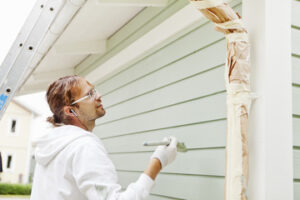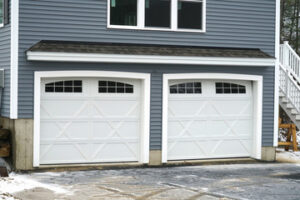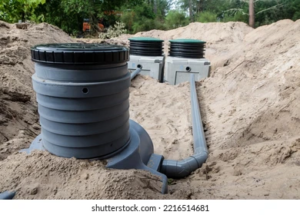Rodents can cause serious problems when they invade homes and businesses. Their constant gnawing can damage electrical wiring and woodwork, causing fire hazards and water damage. Rodents can also spread diseases by contaminating food and water with their droppings and urine or through ticks, mites, and fleas they carry on their bodies. Contact Rodent Retreat now!
Rodents are a common nuisance pest that can cause health and safety problems. They can carry bacteria and viruses that can be transmitted to people through bite wounds or food contaminated by rodent droppings. They can also contaminate water supply through gnawing on pipes and other structures. They are also a significant cause of property damage in homes and businesses, and the presence of rats can create a sanitary and unclean environment.

Rats come into homes and other buildings primarily to search for food, water, shelter, and other resources. They often gain access through open doors, windows, and vents, but can also enter through small cracks and holes. They are nocturnal animals, and their small size allows them to fit into spaces that are too small for humans to access during the day.
Because rats are so skilled at adapting to urban life, they have become a significant problem in residential and commercial settings. These rodents raid kitchen cupboards and other storage areas, contaminating food with their urine, feces, and fur. In addition, they can cause fire hazards, wood damage, and other structural issues. In commercial settings, a rat infestation can result in serious health code violations and a loss of reputation and revenue.
Effective rodent removal eliminates health risks, prevents property damage, ensures food safety, mitigates psychological distress, and contributes to the preservation of local ecosystems. When an infestation is detected, it is important to act quickly to limit the potential for damage and minimize costly repair costs.
The most common methods of preventing and controlling rats include rodenticides, traps, and exclusionary techniques. However, some homeowners and business owners prefer to use non-lethal rodent control methods. These options are usually more humane, safer for pets and children, and do not involve the use of poisons that pose a threat to the environment.
A rat infestation can be prevented by storing all food in airtight containers, and regularly cleaning and securing outdoor storage areas. Inspecting trees regularly to make sure they do not touch your building, and removing overgrown vegetation that can provide shelter and food sources are also important.
Mice
Rodents can cause significant damage to homes and businesses. Their sharp incisors can chew through wood, electrical wiring and insulation, which may result in fire hazards, structural integrity problems and water damage. Additionally, rodents carry numerous diseases that can be transmitted to people and pets.
Mice are the most common rodent found in and around buildings. They are typically found in dark, secluded areas such as attics, basements and cupboards. Rodents are opportunistic, and can take advantage of any opportunity to access food and shelter.
A home or business owner can prevent mice from invading by being vigilant for signs of their presence. Look for droppings and gnaw marks, nesting material, tracks and holes in walls and floors.
It is also important to remove potential rodent nesting sites from the property, such as leaf piles, thick mulch and overgrown weeds. Store garbage and compost bins in tightly-closed containers, and turn over compost piles regularly to keep them from attracting rodents.
Regularly trim trees and shrubs to ensure they are not touching the building. This will prevent mice from using them as bridges to get to the house. Store any outdoor items, including firewood, away from the structure and on a raised platform to discourage mice from digging under the foundation.
Mice are very opportunistic and can gain entry into a home through cracks, crevices and gaps as small as a quarter inch. Sealing these spaces with caulking, steel wool and expanding foam will prevent them from entering the home.
Another method of repelling mice is to use peppermint oil. Simply dab the oil on cotton balls and place them in various places where you suspect a mouse is trying to enter your home. It is also important to maintain a clean, decluttered home to discourage them from staying. This includes storing food in airtight containers, keeping trash cans tightly closed and cleaning up crumbs and spills immediately. If you still see evidence of a rodent problem, it is best to call a pest control professional for professional help.
Squirrels
Squirrels can be a nuisance, especially when they live in dark areas or your attic. Fortunately, getting them to leave without harming them is easier than you might think. These wild animals are more afraid of you than you are of them, and they don’t want to remain in places where they can’t get food or find shelter. To encourage them to move out, give them a clear path to escape from your home.
To deter rodents from entering your home, keep your property well-maintained. Keep trees and bushes trimmed, and remove weeds and debris piles near your house. Store firewood at least 20 feet away, and make sure garbage bins have tight-fitting lids. Regularly clean up crumbs and spills, and throw away trash promptly to prevent attracting rodents. If you do have outdoor food sources, such as bird feeders and compost piles, be sure to move them far from your house.
You can also block entrance points by filling cracks, crevices, and holes with caulking products. Rodents can squeeze through spaces as small as a dime, so it’s important to inspect both the interior and exterior of your home thoroughly. Look for entry points around doors and windows, as well as gaps in the eaves and roof, and seal them immediately.
If you’re unable to deter squirrels from gaining access to your home, try using humane traps and relocation techniques. You can use bait-based traps to catch them and then release them in an area five to ten miles away from your home. Or, you can buy sprays that emit an unpleasant scent for squirrels and discourage them from entering your property.
If these methods fail to work, you may need to hire a professional. A trained wildlife removal specialist can quickly resolve a rodent infestation, saving you the cost of repairs and potential health risks. When choosing a service, be sure to choose one with an excellent reputation and proper licensing and insurance coverage. You can even ask for references from previous clients to make sure the service will be able to meet your needs.
Other Rodents
Rodents are a common household pest that can cause damage to property, eat away at home insulation and wires, and exacerbate allergy and asthma symptoms. Rodents also carry diseases that can be transmitted to people through contact with their urine, feces, saliva, and nesting materials. In addition, rodents can be a source of fire hazards in homes due to their constant chewing.
The best way to prevent an infestation is to make sure that food waste is removed daily before nightfall and that trash cans are securely lidded. Keep garbage bins a good distance from the house, and store any outdoor items, such as firewood, away from your structure’s foundation. Keep in mind that both rats and mice can climb, so keeping bushes and trees trimmed and away from the roofline of your home or business will help to prevent them from entering through these entry points.
If you suspect a rodent problem, look for droppings in the areas where they are most active. You may also notice chew marks, particularly on furniture, walls, food packaging, and electrical wiring. These marks tend to be lighter in color when new and become darker over time. Listen for scurrying and scratching noises in your walls, ceilings, or attic during the day or night as these are other signs of rodent activity.
Since different species of rodents have distinct behaviors and appearances, identifying which rodent has infested your space is important for proper control methods. The type of traps and bait used will differ depending on the specific type of rodent that has invaded your home. The length of a rodent’s tail relative to its body, fur coloration, and gnawing behavior can help you identify the species that has infiltrated your space.
Rodents that are found in a residential or commercial space should be trapped immediately to limit the spread of disease and other damages. Rats, especially, can transmit harmful diseases to humans, including hantavirus, leptospirosis, lymphocytic choriomeningitis, and plague. These illnesses can be transferred through direct contact with a rodent, or indirectly through consuming food contaminated by fleas, ticks, and mites that have fed on infected rodents.








